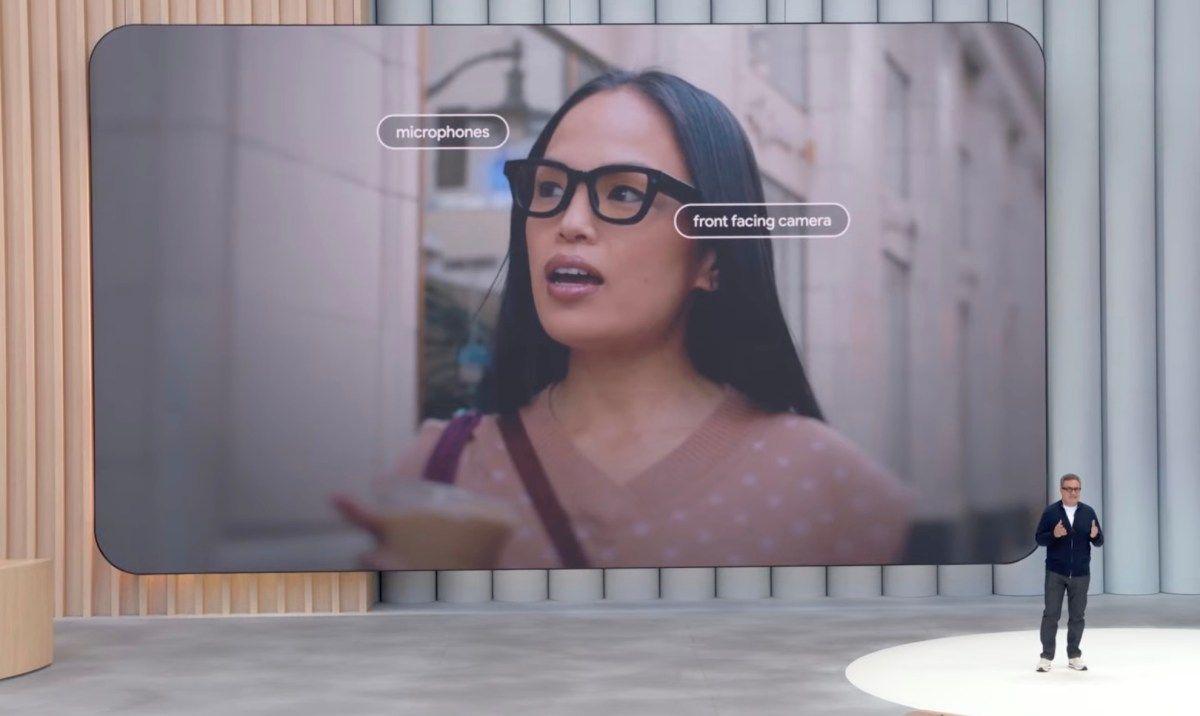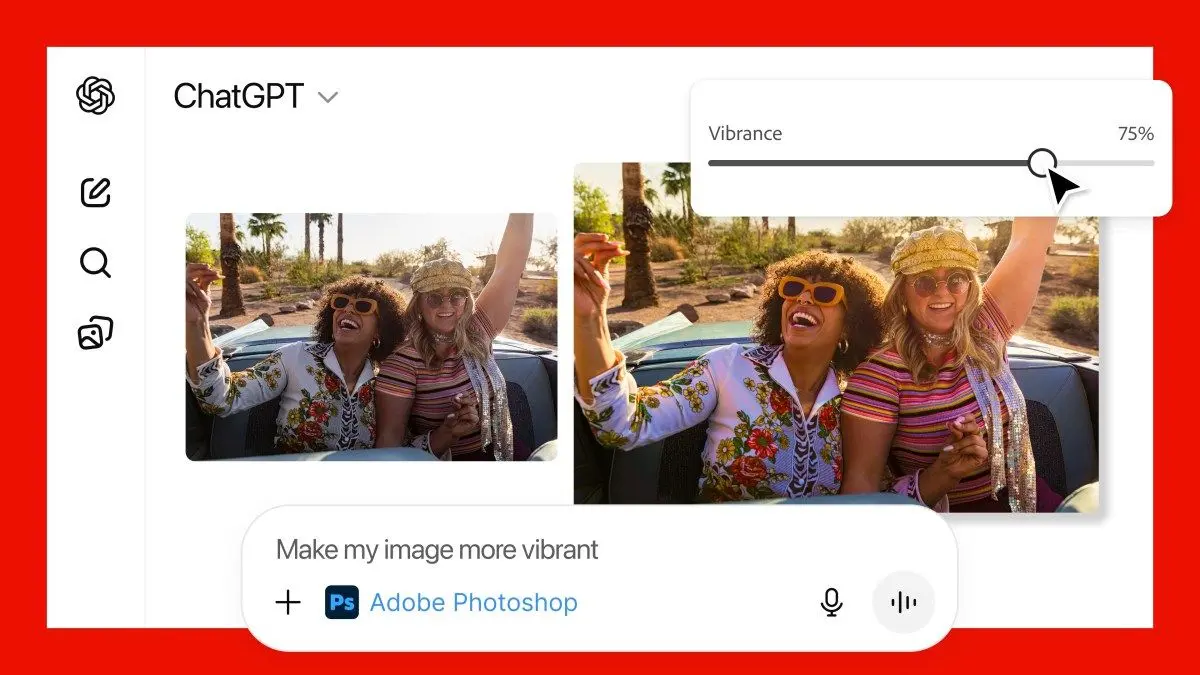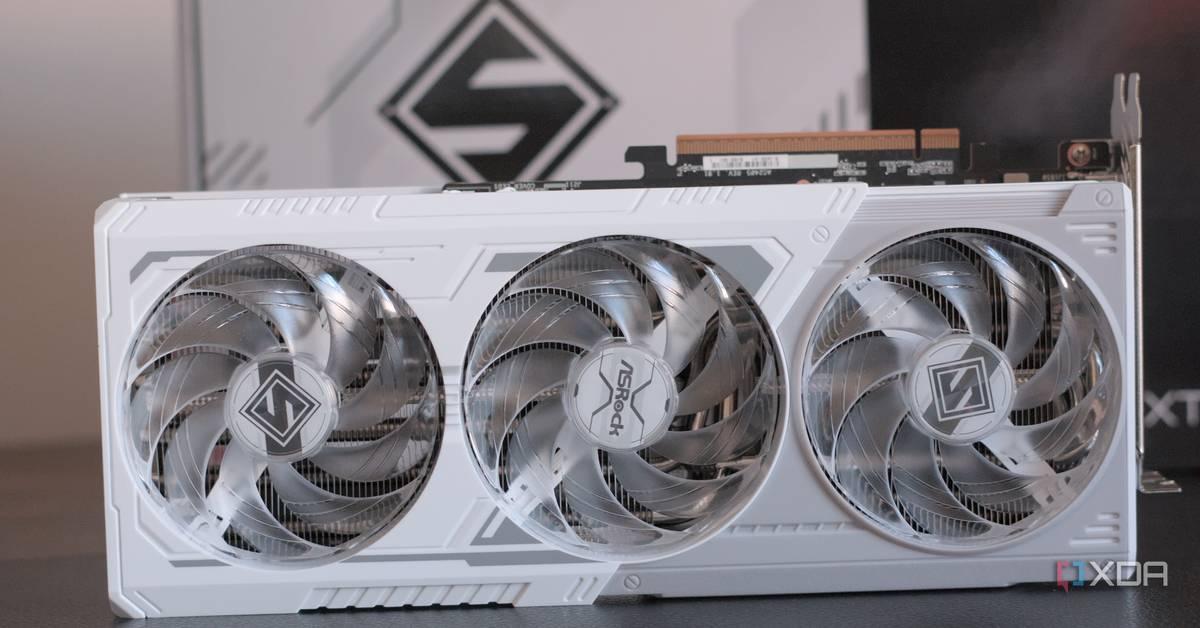NVIDIA Unveils New Tools for AI-Native 6G Wireless Networks
4 Sources
4 Sources
[1]
NVIDIA Aerial Expands With New Tools for Building AI-Native Wireless Networks
Portfolio of solutions in the AI Aerial platform empower developers to drive breakthroughs in AI-RAN and 6G research. The telecom industry is increasingly embracing AI to deliver seamless connections -- even in conditions of poor signal strength -- while maximizing sustainability and spectral efficiency, the amount of information that can be transmitted per unit of bandwidth. Advancements in AI-RAN technology have set the course toward AI-native wireless networks for 6G, built using AI and accelerated computing from the start, to meet the demands of billions of AI-enabled connected devices, sensors, robots, cameras and autonomous vehicles. To help developers and telecom leaders pioneer these networks, NVIDIA today unveiled new tools in the NVIDIA Aerial Research portfolio. The expanded portfolio of solutions include the Aerial Omniverse Digital Twin on NVIDIA DGX Cloud, the Aerial Commercial Test Bed on NVIDIA MGX, the NVIDIA Sionna 1.0 open-source library and the Sionna Research Kit on NVIDIA Jetson -- helping accelerate AI-RAN and 6G research. Industry leaders like Amdocs, Ansys, Capgemini, DeepSig, Fujitsu, Keysight, Kyocera, MathWorks, Mediatek, Samsung Research, SoftBank and VIAVI Solutions and more than 150 higher education and research institutions from U.S. and around the world -- including Northeastern University, Rice University, The University of Texas at Austin, ETH Zurich, Fraunhofer Institute for Telecommunications, Heinrich-Hertz-Institut, HHI, Singapore University of Technology and Design, and University of Oulu -- are harnessing the NVIDIA Aerial Research portfolio to develop, train, simulate and deploy groundbreaking AI-native wireless innovations. New Tools for Research and Development The Aerial Research portfolio provides exceptional flexibility and ease of use for developers at every stage of their research -- from early experimentation to commercial deployment. Its offerings include: NVIDIA Aerial Research Ecosystem for AI-RAN and 6G The NVIDIA Aerial Research portfolio includes the NVIDIA 6G Developer Program, an open community that serves more than 2,000 members, representing leading technology companies, academia, research institutions and telecom operators using NVIDIA technologies to complement their AI-RAN and 6G research. Testing and simulation will play an essential role in developing AI-native wireless networks. Companies such as Amdocs, Ansys, Keysight, MathWorks and VIAVI are enhancing their simulation solutions with NVIDIA AODT, while operators have created digital twins of their radio access networks to optimize performance with changing traffic scenarios. Nine out of 10 demonstrations chosen by the AI-RAN Alliance for Mobile World Congress were developed using the NVIDIA Aerial Research portfolio, leading to breakthrough results. SoftBank and Fujitsu demonstrated an up to 50% throughput gain in poor radio environments using AI-based uplink channel interpolation. DeepSig developed OmniPHY, an AI-native air interface that eliminates traditional pilot overhead, harnessing neural networks to achieve up to 70% throughput gains in certain scenarios. Using the NVIDIA AI Aerial platform, OmniPHY integrates machine learning into modulation, reception and demodulation to optimize spectral efficiency, reduce power consumption and enhance wireless network performance. "AI-native signal processing is transforming wireless networks, delivering real-world results," said Jim Shea, cofounder and CEO of DeepSig. "By integrating deep learning to the air interface and leveraging NVIDIA's tools, we're redefining how AI-native wireless networks are designed and built." In addition to the Aerial Research portfolio, using the open ecosystem of NVIDIA CUDA-X libraries, built on CUDA, developers can build applications that deliver dramatically higher performance.
[2]
Nvidia partners with telecom leaders to develop AI-native 6G wireless networks
Nvidia said 6G wireless networks are coming, with help from artificial intelligence processing. At GTC 2025, Nvidia today unveiled partnerships with industry leaders T-Mobile, Mitre, Cisco, ODC, a portfolio company of Cereberus Capital Management, and Booz Allen Hamilton on the research and development of AI-native wireless network hardware, software and architecture for 6G. Next-generation wireless networks must be fundamentally integrated with AI to seamlessly connect hundreds of billions of phones, sensors, cameras, robots and autonomous vehicles. AI-native wireless networks will provide enhanced services for billions of users and set new standards in spectral efficiency -- the rate at which data can be transmitted over a given bandwidth. They will also offer groundbreaking performance and resource utilization while creating new revenue streams for telecommunications companies. "Next-generation wireless networks will be revolutionary, and we have an unprecedented opportunity to ensure AI is woven in from the start," said Jensen Huang, founder and CEO of Nvidia, in a statement. "Working with leaders in the field, we're building an AI-enhanced 6G network that achieves extreme spectral efficiency." In his speech, Huang added, "The next generation of radio networks will have AI deeply inserted into it." Open ecosystems drive innovation Research-driven breakthroughs harnessing the power of AI are necessary to maximize the performance and benefits of AI-native wireless networks. To drive innovation, Nvidia is collaborating with telco and research leaders to develop an AI native wireless network stack based on the Nvidia AI Aerial platform, which provides software-defined radio access networks on the Nvidia accelerated computing platform. Developers across the globe are building AI-RAN as a precursor to AI-native 6G wireless networks. AI-RAN is a technology that brings AI and RAN workloads together on one platform and embeds AI into radio signal processing. To deliver enhanced spectral efficiency and lower operational complexity and costs, AI will be fully embedded into the network stack's software and hosted over a unified accelerated infrastructure, capable of running both network and AI workloads. Also at the solution's core will be end-to-end security and an open architecture to foster rapid innovation. T-Mobile and Nvidia will expand their AI-RAN Innovation Center collaboration announced last year with the goal of providing additional research-based concepts for AI-native 6G network capabilities, working alongside these new industry collaborators. "This is an exciting next step to the AI-RAN Innovation Center efforts we began last September at our Capital Markets Day in partnership with Nvidia," Mike Sievert, CEO of T-Mobile. "Working with these additional industry leaders on research to natively integrate AI into the network as we begin the journey to 6G will enable the network performance, efficiency and scale to power the next generation of experiences that customers and businesses expect." In a press briefing, Nvidia's Ronnie Vasishta said 95% of telecom companies are engaging with Nvidia. And he noted 6G networks would likely have hundreds of billions of devices connected to them. "AI is set to transform wireless networks. The countdown to 6G has already begun. Funding and research has moved to next gen cycle. The opportunity is to see AI is woven in from the start. We believe the next generation will be AI native," he said. As the founding research partner, Mitre, a not-for-profit research and development organization, will research, prototype and contribute open, AI-driven services and applications, such as for agentic network orchestration and security, dynamic spectrum sharing and 6G-integrated sensing and communications. "Mitre is working with Nvidia to help make AI-native 6G a reality," said Mark Peters, president and CEO of MITRE. "By integrating AI into 6G in the beginning, we can solve a wide range of problems, from enhancing service delivery to unlocking required spectrum availability to fuel wireless growth. Through all of our collaborations with Nvidia, we look forward to creating impact in 6G, AI, simulation, transportation and more." Cisco plans to take a lead position in this collaboration as the provider of mobile core and network technologies and will tap into its existing service provider reach and expertise. "With 6G on the horizon, it's critical for the industry to work together to build AI native networks for the future," said Chuck Robbins, chair and CEO of Cisco. "Cisco is at the forefront of developing secure infrastructure technology for AI, and we are proud to work with NVIDIA and the broader ecosystem to create an AI-enhanced network that improves performance, reliability and security for our customers." ODC, a portfolio company of Cerberus Capital Management, L.P., will deliver cutting-edge layer 2 and layer 3 software for distributed and centralized units of virtual RAN as part of the AI-native radio access stack. Tapping into decades of experience in large-scale mobile systems, ODC is pioneering next-generation AI native 5G open RAN (ORAN), surpassing existing networks and seamlessly paving the way for 6G evolution. "The mobile industry has always taken advantage of advances in other technology fields, and today, no technology is more central than AI," said Shaygan Kheradpir, chairman of the advisory board of ODC, in a statement. "ODC is at the forefront of developing and deploying AI-native ORAN 2.0 networks, enabling service providers to on-ramp seamlessly from 5G to 6G by taking advantage of the vast AI ecosystem to redefine the future of connectivity." As a leader in AI and cybersecurity to the federal government, Booz Allen will develop AI RAN algorithms and secure the AI-native 6G wireless platform. Its NextG lab will conduct functional, performance integration and security testing to ensure the resiliency and security of the platform against the most sophisticated adversaries. The company will lead field trials for advanced use cases such as autonomy and robotics. "The future of wireless communications starts today, and it's all about AI," said Horacio Rozanski, chairman and CEO of Booz Allen. "Booz Allen has the technologies to make AI-native 6G networks a reality and revolutionize secure communications for an entirely new generation of intelligent platforms and applications." Expanded aerial research portfolio These collaborations build on Nvidia's AI-RAN and 6G research ecosystem, supported by advancements in the NVIDIA Aerial™ research portfolio for developing, training, simulating and deploying groundbreaking AI-native wireless innovations. New additions to the Nvidia Aerial Research portfolio, also announced today, include the Aerial Omniverse Digital Twin Service, the Aerial Commercial Test Bed on Nvidia MGX, Nvidia Sionna 1.0 -- building on the open-source Sionna library, which has nearly 150,000 downloads since its launch in 2022 -- and the Sionna Research Kit on the Nvidia Jetson accelerated computing platform. The Nvidia Aerial Research portfolio serves over 2,000 members through the Nvidia 6G Developer Program. Industry leaders and more than 150 higher education and research institutions from the U.S. and around the world are harnessing the platform to accelerate 6G and AI-RAN innovation -- paving the way for AI-native wireless networks.
[3]
NVIDIA and Telecom Industry Leaders to Develop AI-Native Wireless Networks for 6G
GTC -- NVIDIA today unveiled partnerships with industry leaders T-Mobile, MITRE, Cisco, ODC, a portfolio company of Cerberus Capital Management, and Booz Allen Hamilton on the research and development of AI-native wireless network hardware, software and architecture for 6G. Next-generation wireless networks must be fundamentally integrated with AI to seamlessly connect hundreds of billions of phones, sensors, cameras, robots and autonomous vehicles. AI-native wireless networks will provide enhanced services for billions of users and set new standards in spectral efficiency -- the rate at which data can be transmitted over a given bandwidth. They will also offer groundbreaking performance and resource utilization while creating new revenue streams for telecommunications companies. "Next-generation wireless networks will be revolutionary, and we have an unprecedented opportunity to ensure AI is woven in from the start," said Jensen Huang, founder and CEO of NVIDIA. "Working with leaders in the field, we're building an AI-enhanced 6G network that achieves extreme spectral efficiency." Open Ecosystems Drive Innovation Research-driven breakthroughs harnessing the power of AI are necessary to maximize the performance and benefits of AI-native wireless networks. To drive innovation, NVIDIA is collaborating with telco and research leaders to develop an AI-native wireless network stack based on the NVIDIA AI Aerial platform, which provides software-defined radio access networks (RANs) on the NVIDIA accelerated computing platform. Developers across the globe are building AI-RAN as a precursor to AI-native 6G wireless networks. AI-RAN is a technology that brings AI and RAN workloads together on one platform and embeds AI into radio signal processing. To deliver enhanced spectral efficiency and lower operational complexity and costs, AI will be fully embedded into the network stack's software and hosted over a unified accelerated infrastructure, capable of running both network and AI workloads. Also at the solution's core will be end-to-end security and an open architecture to foster rapid innovation. T-Mobile and NVIDIA will expand their AI-RAN Innovation Center collaboration announced last year with the goal of providing additional research-based concepts for AI-native 6G network capabilities, working alongside these new industry collaborators. "This is an exciting next step to the AI-RAN Innovation Center efforts we began last September at our Capital Markets Day in partnership with NVIDIA," Mike Sievert, CEO of T-Mobile. "Working with these additional industry leaders on research to natively integrate AI into the network as we begin the journey to 6G will enable the network performance, efficiency and scale to power the next generation of experiences that customers and businesses expect." As the founding research partner, MITRE, a not-for-profit research and development organization, will research, prototype and contribute open, AI-driven services and applications, such as for agentic network orchestration and security, dynamic spectrum sharing and 6G-integrated sensing and communications. "MITRE is working with NVIDIA to help make AI-native 6G a reality," said Mark Peters, president and CEO of MITRE. "By integrating AI into 6G in the beginning, we can solve a wide range of problems, from enhancing service delivery to unlocking required spectrum availability to fuel wireless growth. Through all of our collaborations with NVIDIA, we look forward to creating impact in 6G, AI, simulation, transportation and more." Cisco plans to take a lead position in this collaboration as the provider of mobile core and network technologies and will tap into its existing service provider reach and expertise. "With 6G on the horizon, it's critical for the industry to work together to build AI-native networks for the future," said Chuck Robbins, chair and CEO of Cisco. "Cisco is at the forefront of developing secure infrastructure technology for AI, and we are proud to work with NVIDIA and the broader ecosystem to create an AI-enhanced network that improves performance, reliability and security for our customers." ODC, a portfolio company of Cerberus Capital Management, L.P., will deliver cutting-edge layer 2 and layer 3 software for distributed and centralized units of virtual RAN as part of the AI-native radio access stack. Tapping into decades of experience in large-scale mobile systems, ODC is pioneering next-generation AI-native 5G open RAN (ORAN), surpassing existing networks and seamlessly paving the way for 6G evolution. "The mobile industry has always taken advantage of advances in other technology fields, and today, no technology is more central than AI," said Shaygan Kheradpir, chairman of the advisory board of ODC. "ODC is at the forefront of developing and deploying AI-native ORAN 2.0 networks, enabling service providers to on-ramp seamlessly from 5G to 6G by taking advantage of the vast AI ecosystem to redefine the future of connectivity." As a leader in AI and cybersecurity to the federal government, Booz Allen will develop AI RAN algorithms and secure the AI-native 6G wireless platform. Its NextG lab will conduct functional, performance integration and security testing to ensure the resiliency and security of the platform against the most sophisticated adversaries. The company will lead field trials for advanced use cases such as autonomy and robotics. "The future of wireless communications starts today, and it's all about AI," said Horacio Rozanski, chairman and CEO of Booz Allen. "Booz Allen has the technologies to make AI-native 6G networks a reality and revolutionize secure communications for an entirely new generation of intelligent platforms and applications." Expanded Aerial Research Portfolio These collaborations build on NVIDIA's AI-RAN and 6G research ecosystem, supported by advancements in the NVIDIA Aerial™ research portfolio for developing, training, simulating and deploying groundbreaking AI-native wireless innovations. New additions to the NVIDIA Aerial Research portfolio, also announced today, include the Aerial Omniverse Digital Twin Service, the Aerial Commercial Test Bed on NVIDIA MGX™, NVIDIA Sionna™ 1.0 -- building on the open-source Sionna library, which has nearly 150,000 downloads since its launch in 2022 -- and the Sionna Research Kit on the NVIDIA Jetson™ accelerated computing platform. The NVIDIA Aerial Research portfolio serves over 2,000 members through the NVIDIA 6G Developer Program. Industry leaders and more than 150 higher-education and research institutions from the U.S. and around the world are harnessing the platform to accelerate 6G and AI-RAN innovation -- paving the way for AI-native wireless networks. Learn more by watching the NVIDIA GTC telecom special address and register for sessions from NVIDIA and industry leaders at the show, which runs through March 21.
[4]
Nvidia's AI-RAN tech is building the future of 6G wireless
NVIDIA has expanded its Aerial Research portfolio with new tools aimed at accelerating AI-native wireless networks and 6G research, as announced on March 18, 2025. The tools empower developers and telecom leaders to innovate in AI-RAN technology. The telecom industry is increasingly integrating AI to ensure seamless connectivity in areas with poor signal strength while enhancing sustainability and spectral efficiency. AI-RAN advancements are paving the way for AI-native wireless networks designed to cater to billions of connected devices, sensors, robots, cameras, and autonomous vehicles. New offerings in the NVIDIA Aerial Research portfolio The newly launched tools include the Aerial Omniverse Digital Twin (AODT) on NVIDIA DGX Cloud, the Aerial Commercial Test Bed (ARC-OTA) on NVIDIA MGX, the NVIDIA Sionna 1.0 open-source library, and the Sionna Research Kit on NVIDIA Jetson. These offerings are tailored to support AI-RAN and 6G development efforts. The Aerial Omniverse Digital Twin provides a simulation platform for testing algorithms in detailed digital replicas of wireless systems, accessible via multiple environments including on-premises and cloud options. The Aerial Commercial Test Bed allows for real-time deployment and testing of AI models over the air, incorporating commercial-grade RAN software and open-source elements to form a comprehensive AI-RAN testing ecosystem. Sionna 1.0 has become the most downloaded GPU-accelerated open-source library for communication systems, now featuring a ray tracer for radio propagation and advanced simulation capabilities. The Sionna Research Kit supports researchers in prototyping AI-RAN algorithms by enabling quick connections to 5G equipment. The NVIDIA Aerial Research portfolio is further bolstered by the NVIDIA 6G Developer Program, which engages over 2,000 members from leading tech companies, academia, and telecom operators dedicated to advancing AI-RAN and 6G research. Llama Nemotron: Nvidia's answer to the AI reasoning boom Industry impact and collaborations Testing and simulation are crucial for the development of AI-native wireless networks. Companies including Amdocs, Ansys, and Keysight are improving their simulation solutions through NVIDIA's AODT. The AI-RAN Alliance highlighted that nine out of ten demonstrations presented at Mobile World Congress utilized the NVIDIA Aerial Research tools, yielding significant advancements. In particular, SoftBank and Fujitsu achieved a 50% throughput increase in suboptimal radio conditions by applying AI-based uplink channel interpolation. DeepSig developed OmniPHY, which leverages neural networks to eliminate traditional overhead, facilitating up to 70% throughput gains. This AI-native air interface integrates machine learning into critical components to optimize spectral efficiency and reduce power consumption. "AI-native signal processing is transforming wireless networks, delivering real-world results," stated Jim Shea, cofounder and CEO of DeepSig, emphasizing the significant impact of integrating deep learning into wireless network design. The ecosystem of NVIDIA CUDA-X libraries also supports developers in creating high-performance applications to further explore AI in telecommunications.
Share
Share
Copy Link
NVIDIA expands its Aerial Research portfolio with new tools to accelerate the development of AI-native wireless networks and 6G technology, partnering with major telecom industry leaders.

NVIDIA Expands Aerial Research Portfolio for AI-Native Wireless Networks
NVIDIA has unveiled an expanded portfolio of tools within its Aerial Research platform, aimed at accelerating the development of AI-native wireless networks and 6G technology
1
. This announcement comes as the telecom industry increasingly embraces AI to enhance connectivity, sustainability, and spectral efficiency.New Tools for AI-RAN and 6G Research
The expanded Aerial Research portfolio includes several key components:
- Aerial Omniverse Digital Twin (AODT) on NVIDIA DGX Cloud
- Aerial Commercial Test Bed (ARC-OTA) on NVIDIA MGX
- NVIDIA Sionna 1.0 open-source library
- Sionna Research Kit on NVIDIA Jetson
These tools are designed to support developers and telecom leaders in pioneering AI-native wireless networks for 6G, built using AI and accelerated computing from the ground up
1
4
.Industry Collaboration and Impact
NVIDIA has partnered with industry leaders such as T-Mobile, MITRE, Cisco, ODC, and Booz Allen Hamilton to research and develop AI-native wireless network hardware, software, and architecture for 6G
2
3
. This collaboration aims to create networks capable of seamlessly connecting hundreds of billions of devices, from phones to autonomous vehicles.The impact of these tools is already evident in the industry:
- Nine out of ten demonstrations chosen by the AI-RAN Alliance for Mobile World Congress were developed using the NVIDIA Aerial Research portfolio
1
. - SoftBank and Fujitsu demonstrated a 50% throughput gain in poor radio environments using AI-based uplink channel interpolation
1
4
. - DeepSig developed OmniPHY, an AI-native air interface that achieves up to 70% throughput gains in certain scenarios
1
4
.
AI-Native 6G Network Vision
The vision for AI-native 6G networks includes:
- Enhanced spectral efficiency and lower operational complexity
- AI fully embedded into the network stack's software
- Unified accelerated infrastructure capable of running both network and AI workloads
- End-to-end security and an open architecture to foster rapid innovation
2
3
Jensen Huang, founder and CEO of NVIDIA, emphasized the importance of integrating AI from the start: "Next-generation wireless networks will be revolutionary, and we have an unprecedented opportunity to ensure AI is woven in from the start"
2
.Related Stories
Industry Perspectives
Industry leaders have expressed enthusiasm for the potential of AI-native 6G networks:
- Mike Sievert, CEO of T-Mobile, highlighted the importance of natively integrating AI into the network for enhanced performance and efficiency
2
3
. - Chuck Robbins, chair and CEO of Cisco, stressed the critical need for industry collaboration in building AI-native networks for the future
2
3
. - Shaygan Kheradpir, chairman of the advisory board of ODC, noted that AI is now central to the mobile industry's advancement
2
3
.
NVIDIA 6G Developer Program
Supporting these efforts is the NVIDIA 6G Developer Program, an open community serving over 2,000 members from leading technology companies, academia, research institutions, and telecom operators
1
4
. This program plays a crucial role in fostering innovation and collaboration in AI-RAN and 6G research.As the telecom industry moves towards AI-native wireless networks, NVIDIA's expanded Aerial Research portfolio and industry partnerships are poised to play a significant role in shaping the future of 6G technology and connectivity.
References
Summarized by
Navi
Related Stories
Nvidia Invests $1 Billion in Nokia to Accelerate AI-Powered 6G Networks
29 Oct 2025•Business and Economy

Nokia and Partners Advance AI-RAN Development for 5G and Beyond
03 Mar 2025•Technology

SoftBank and Nvidia Pioneer AI-Powered 5G Network, Unveil Ambitious AI Infrastructure Plans
13 Nov 2024•Technology

Recent Highlights
1
AI Chatbots Sway Voters More Effectively Than Traditional Political Ads, New Studies Reveal
Science and Research

2
Google AI glasses set to launch in 2026 with Gemini and Android XR across multiple partners
Technology

3
EU Launches Antitrust Probe Into Google's AI Training Practices and Content Usage
Policy and Regulation




